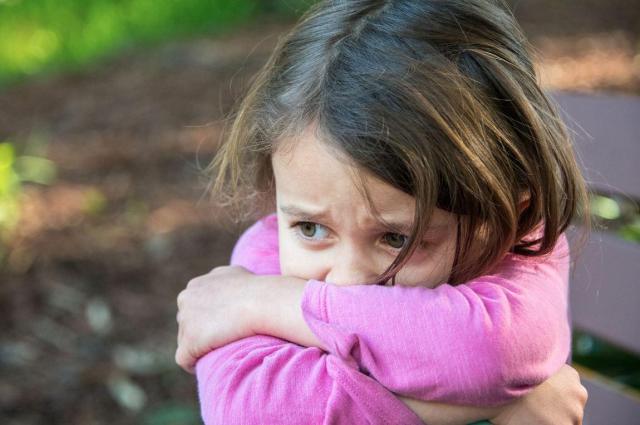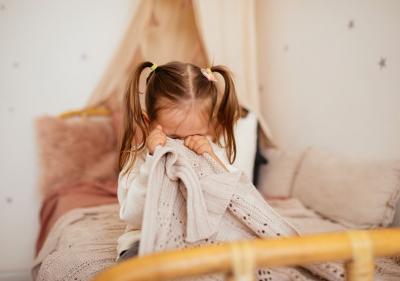(Ages 4 – 13 years approximately)
Before we try to support our children with anxiety, it is import that we understand and feel comfortable with it ourselves. A certain amount of anxiety is essential from an evolutionary perspective in order to help protect us from danger. As parents, we never want to ‘get rid’ of our child’s anxiety and nor is this possible.
Our goal as parents is to help recognise when our child is in a fear state and help them move from “I am in danger” to “I am safe”. Sometimes however, our instinct is to try to pull our children out of their fear by trying to rationalise with them why they shouldn’t feel so worried. Trying to rationalise fear in that moment, rarely works. The child’s survival brain is very activated and their ‘thinking brain’ is ‘off-line’ in order to save energy for survival.
So what can help your child with anxiety?
1. Jump into the fear with them rather than pulling them out.
When your child says “oh I’m afraid to go to the toilet, the toilet bowl is scary”, the temptation is to pull them out of their fear by saying “ah don’t be silly pet, you know the toilet is safe”. ‘Jumping in’ there with them, however, sounds quite different and may sound like “ah I see, so there really is something about that toilet bowl that scares you, isn’t there”. When we do this, they are less alone with their feeling; they can see that you are not afraid of it, and they are more likely to talk to you about it. They also feel heard and validated.
2. Validate.
Explain how you understand your child’s fear and how it could make sense to them; “of course it can be scary going into big groups of people; we have not been in many big groups since Covid really have we”. This shows to them that you are not afraid of their fear, you are welcoming of this ‘afraid’ part of them. You can also let them know that you are glad that they brought this up; this encourages a child to cope with their feelings rather than trying to push them away (e.g. “I’m really glad you talked about this – this is so important and I want to help you with it”).
3. Support.
Encourage your child to problem solve with you. Offer some ideas but also allow your child the chance to come up with some of their own. This might sound like “so I was wondering if…..” or “I wonder what you could do when…..” for example.
You could also present a choice of different possible coping strategies to see what your child might prefer, e.g. deep breaths; grounding exercise; using movement. Allowing them to choose a strategy can help give them a sense of agency or control, which is what we all want when faced with something that scares us!
4. Practice.
While we often don’t want to bring the event/trigger that provokes anxiety for our child, research shows that confronting it, discussing it and practicing the skills to get through it actually helps; and doing these things at a time when your child is calm, is best. ‘Practice runs’ give a child the chance to practice how they might react when the ‘real thing’ happens and can help them feel more prepared for moments of separation, public speaking, joining a large group, auditions and so on. You can practice using role-play, using teddies or dolls, or you may even draw out a cartoon strip as to what might happen.
5. Show the amygdala they’re safe.
But what do I do if my child still gets highly anxious and I need to help them to calm down? Once the amygdala senses danger, it can be very difficult to stop the cascade of biochemical reactions that follow. The body and brain will respond as if the danger is immediate. The best way to help an anxious child calm their anxious brain is to teach them to show their amygdala they’re safe. Deep and intentional breathing helps an anxious child to calm their amygdala and will begin to reduce their anxiety symptoms.
Other activities that help include: gentle movement, deep pressure, massage, having a cold drink, gargling, chanting or using a mantra have also been shown to quieten the amygdala.
6. Practice defusing sticky thoughts or ‘worry’ thoughts.
Anxious thoughts can get stuck, refusing to budge no matter how much attention is paid to them. Defusion is a strategy that helps anxious children look at their thoughts rather than from them. It helps them to get distance from the thought.
Your anxious child can defuse his unhelpful thoughts by putting a statement in front of the thought such as: “I notice I’m having the thought that I’m going to fail the test.” Singing the thought or writing it down also helps us to create distance from the thought.
7. Get the fundamentals right
Ample sleep, good nutrition and exercise are essential to help keep your child’s nervous system in the ‘green zone’. It is also important to balance screen time with ‘green time’ (or time outside) as this helps to maintain a good biochemical balance in the brain and body.
Dr. Rebecca Quin
Chartered Senior Clinical Psychologist
www.thepsychologypractice.ie

Dr. Rebecca Quin is a chartered senior clinical psychologist & director of the Psychology Practice, Bray which she founded in early 2022. The practice caters for children and adolescents who are experiencing mental health difficulties.
She has 15 years experience working with younger people & their parents within primary care, disability and acute mental health settings. She has also worked in the area of neuropsychology in King’s College Hospital and the Maudsley hospital, London as well as Beaumont hospital in Dublin, Ireland.
Rebecca’s areas of special interest include childhood anxiety, autism and the relationship between physical activity and mental health. She is currently delivering online and in person workshops for parents and schools on these topics. She also carries out a wide range of assessments for children and teens.







